Podcast Episode 38: Engineering in the USA
Navigating the world of undergraduate engineering education can be a daunting task, especially in the United States, where the landscape of engineering curriculums can be as diverse as the country itself. One striking difference in engineering education in the USA, as compared to the UK, Canada, or many European countries, is the emphasis on non-STEM subjects. In the US, there are typically four types of engineering curriculums, each with its own unique approach to the inclusion of non-STEM topics.
- Technical Institutes: Caltech, officially known as the California Institute of Technology, is a shining example of a technical institute that heavily focuses on pure engineering and science. Their engineering programme emphasizes a rigorous core curriculum primarily consisting of STEM courses. Students at Caltech delve deep into mathematics, physics, chemistry, and computer science, ensuring a strong foundation in these fields. For instance, as a part of the core curriculum, students are required to take courses like “Mathematics,” “Physics,” and “Chemistry,” which are vital for an engineering education. However, even at a technical institute like Caltech, there is recognition of the importance of a well-rounded education, as students are encouraged to explore humanities, social sciences, the arts, literature and language.
- Separate Engineering Schools within universities: Many universities in the USA have dedicated schools or colleges of engineering, where engineering students are exposed to a more specialized engineering curriculum. The University of Pennsylvania School of Engineering and Applied Science (SEAS) is a prime example of this model. Here, students pursue a comprehensive engineering education, but it is complemented by a broader range of liberal arts and general education courses. For instance, students at UPenn SEAS are required to fulfil general education requirements, which may include courses in the humanities, social sciences, and even writing. This combination of engineering expertise and broader knowledge equips students with a well-rounded perspective that can be valuable in their future careers.
- Engineering as a Major within a Liberal Arts curriculum: In some American universities, engineering is offered as a major within a broader liberal arts education. Stanford University, for example, integrates engineering within its liberal arts curriculum, ensuring students receive a well-rounded education encompassing diverse fields of knowledge. Stanford’s School of Engineering has its core requirements but encourages students to explore beyond engineering. For instance, while students majoring in engineering at Stanford will take engineering courses, they also have the flexibility to explore courses in humanities, social sciences, and arts, fostering a multidisciplinary approach to problem-solving.
- 3-2 Programmes: The 3-2 programme, a unique option primarily found in the USA, allows students to earn a Bachelor of Arts (B.A.) or Bachelor of Science (B.S.) degree from a liberal arts college, like Columbia University, followed by a Bachelor of Science in Engineering (B.S.E.) degree from an affiliated engineering school. In this model, students receive a strong foundation in liberal arts subjects during their first three years, after which they transfer to an engineering school for two years of specialized engineering education. This approach combines the benefits of a liberal arts education with the depth of engineering expertise. It can be an attractive option for students who wish to explore different academic areas before committing to a career in engineering.
Comparing the American engineering education landscape to that in the UK, Canada, or Europe reveals stark differences. In the UK, for instance, engineering degrees are typically more specialized from the start, with a strong emphasis on engineering coursework throughout the programme. The UK system offers less flexibility for students to explore non-STEM subjects during their undergraduate years.
In Canada, engineering programmes generally provide a balance between core engineering courses and a limited selection of elective courses. There is room for students to explore non-STEM subjects, but the focus remains predominantly on engineering.
European engineering programmes are typically more focused on specialized engineering courses from the beginning, with fewer opportunities to delve into non-STEM subjects.
The undergraduate engineering education landscape in the United States offers a variety of approaches, each with its own unique blend of STEM and non-STEM coursework. Whether you choose a technical institute like Caltech, a dedicated school within a university like UPenn SEAS, a liberal arts curriculum like Stanford, or a 3-2 programme, the US provides a wide range of options to suit your preferences and career goals. The emphasis on non-STEM subjects in the US sets it apart from engineering education in the UK, Canada, and Europe, offering students the opportunity to build a more multidisciplinary skill set. Each path has its own advantages, and the key is to choose the one that aligns with your interests, goals, and aspirations. To find out more, listen to this podcast episode!


